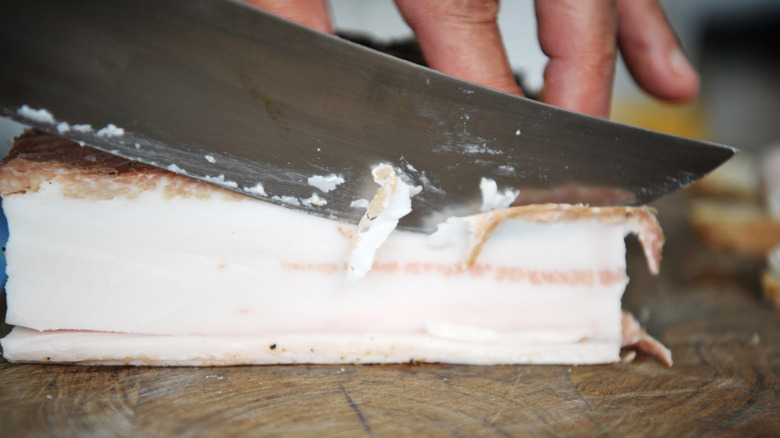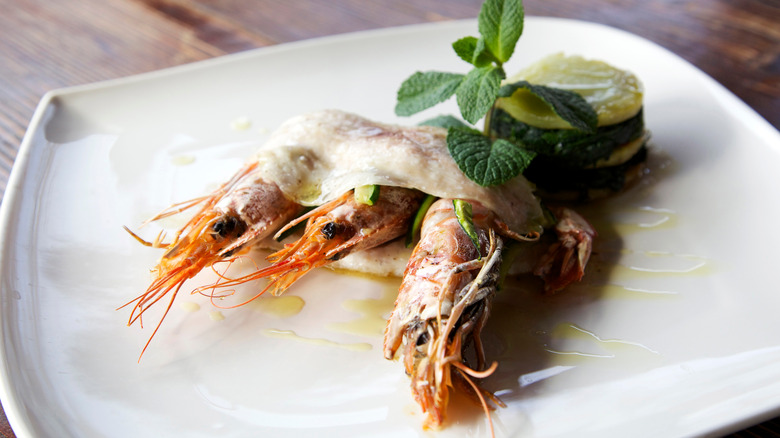Why You Should Never Cook With Lardo
The world of salumi is vast. Living high on the hog, Italian Made notes that Italians have been salting and curing meats for centuries as a means of preservation. Though modern technology has advanced, the taste for salumi remains stronger than ever: from prosciutto to bresaola, speck to mortadella, 'nduja and everything in between. One beloved cured meat from Italy isn't really a meat at all. Lardo is the sweetheart of salumi, but, despite its fatty composition, it should never be cooked.
Sort of like pork belly without the meat, lardo is purely fat. According to Great Italian Chefs, back fat is trimmed into a pearly white block, then it's covered with salt, herbs, and spices before being left to cure for several months in a wooden or marble basin, depending on the area of production. That said, while lardo can be found across Italy, it's primarily produced in Val d'Aosta to create the spiced lard d'Arnad, or in Tuscany, where the lardo di Colonnata hails, notes La Cucina Italiana.
Ultra buttery, slightly sweet, and aromatically smoky, lardo is guaranteed to make you salivate. But, while its fatty appearance might make it seem like a valid substitution for lard, think again — lardo is a salumi in its own rank, which is why it's best served raw, never cooked.
Let lardo melt naturally for the best sensory experience
Pork fat is a secret weapon in the kitchen. It adds flavor, richness, and texture, but not all forms of fat should be used in the same way. It's true that lardo can be totally rendered, but that doesn't mean it should be.
Since the fatty acids in the silky salumi have different melting points, Fine Dining Lovers explains that lardo maintains its soft consistency at room temperature, but benefits from being able to gradually melt when heated. It's for this reason that Serious Eats recommends draping ribbons of creamy lardo over a piece of grilled, fried, or toasted bread, which allows some fat to render directly onto the bread, leaving the rest to melt in your mouth, creating an incredible sensory experience.
A great addition also to charcuterie boards, a slice of lardo can give any dish the perfect umami-rich finish. In fact, Saveur suggests wrapping the mildly tangy salumi around grilled squash or fruits, over top of warm shellfish, or in an open-faced sandwich. You can even layer it on pizza or drape it over roasted vegetables for a bit of decadence. Whatever you decide, remember that lardo will benefit more from a brief bit of melting rather than a total rendering.

